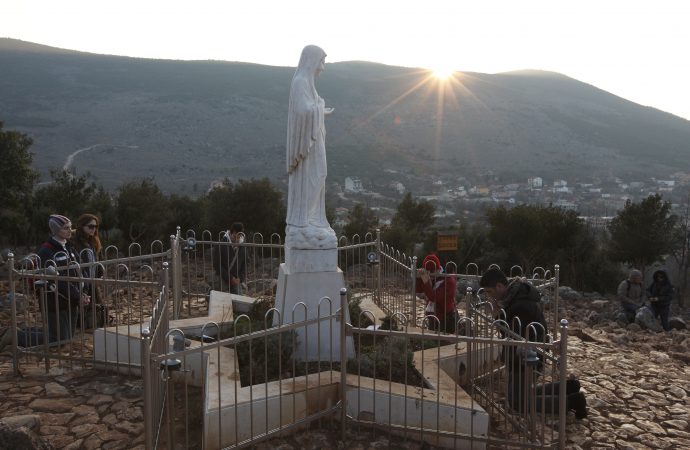Church must be prudent judging Medjugorje apparitions
Medjugorje, Bosnia-Herzegovina, is a place of prayer, conversion and pilgrimage for millions of people, but the Church must be prudent and not rush to any judgment on the alleged Marian apparitions there, said Archbishop Rino Fisichella, president of the Pontifical Council for Promoting New Evangelisation.
Aug 23, 2019

By Sarah Mac Donald
Medjugorje, Bosnia-Herzegovina, is a place of prayer, conversion and pilgrimage for millions of people, but the Church must be prudent and not rush to any judgment on the alleged Marian apparitions there, said Archbishop Rino Fisichella, president of the Pontifical Council for Promoting New Evangelisation.
Speaking to Catholic News Service at Knock Shrine in County Mayo Aug. 15, the feast of the Assumption, Archbishop Fisichella spoke of attending the first officially approved Church festival at Medjugorje in early August.
“I confess the experience was very beautiful, seeing about 70,000 young people praying and living together and listening to catechesis,” he said, describing it as a mini-World Youth Day.
The presence of so many young people there was, he suggested, “one of the fruits” of the pastoral efforts of Medjugorje.
Visionaries claim to have seen than 40,000 Marian apparitions since June 1981, when six teenagers first claimed they first saw an apparition of Our Lady while herding sheep.
As usual, when confronted with an apparition, the Church “is always prudent,” Archbishop Fisichella said.
In May 2018, Pope Francis named Polish Archbishop Henryk Hoser as apostolic visitor to the shrine, after a papal commission recommended that Medjugorje, which attracts up to 3 million visitors annually, be designated a pontifical shrine with Vatican oversight. A ban on pilgrimages organised by dioceses and parishes was then lifted by papal decree.
Some of the six visionaries say Mary still appears to them daily and gives them messages. However, in 2017, when asked about this, Pope Francis appeared to doubt the ongoing nature of these apparitions.
Differentiating between the Vatican’s pastoral care of Medjugorje and the doctrinal study of the apparitions, Archbishop Fisichella said that, following the papal commission’s conclusions, “we are now in another step (phase) in order to understand what happened in Medjugorje.
“I think that for the moment it is necessary to evaluate the richness of the work in Medjugorje. We need to understand all of this together: why there is such a huge number of pilgrims, of prayers and to understand also how the possible apparitions in Medjugorje (relate) to the life of the church. For that we should wait the judgment the Holy Father will give. To rush this delicate matter is a mistake.” --CNS







Total Comments:0